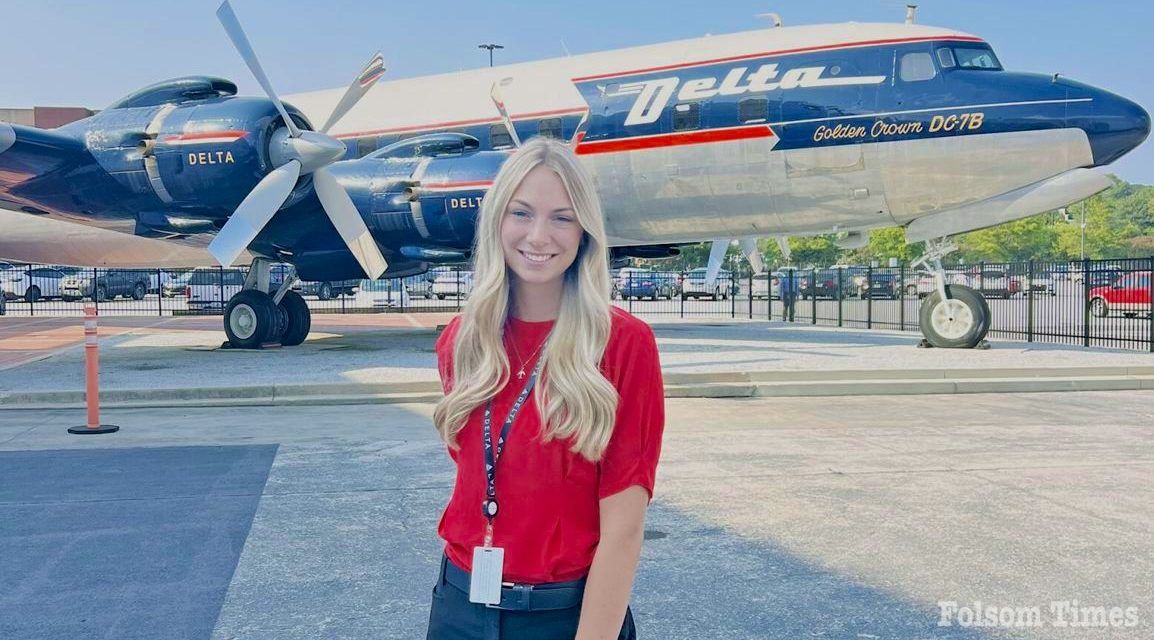El Dorado Hills resident Kelly Hansen is flying for the first time in the 47th Air Race Classic, the oldest airplane race of its kind in the United States. She is one of more than 100 women pilots from across the country and around the world flying in this year’s race, which began June 18 in Carbondale, Ill. and ends in Loveland, Colo., on June 21.
This historical contest traces its roots to the 1929 Women’s Air Derby, aka the Powder Puff Derby, in which Amelia Earhart and 19 other daring female pilots raced from Santa Monica to Cleveland, Ohio. That competition marked the beginning of women’s air racing in the United States. Today, the ARC is the epicenter of women’s air racing, the ultimate test of piloting skill and aviation decision-making for female pilots of all ages and from all walks of life.
The Air Race Classic offers a unique chance to explore unfamiliar territories and push my skills to new heights, whether through navigating mountainous terrain or handling unpredictable weather. Most importantly, it provides an incredible opportunity to connect with and be inspired by other remarkable women pilots.
Hansen is a commercial multi-engine pilot and a senior at Embry-Riddle Aeronautical University. She graduated from Oak Ridge High School in 2021, where she earned her private pilot’s certificate at just 17. In addition to her aviation pursuits, Hansen was a dedicated student-athlete, earning a full ride for volleyball. She is on track to graduate summa cum laude this fall with a degree in aeronautical science.
With nearly 400 flight hours, Hansen is set to obtain her Certified Flight Instructor rating next month. After graduation, she plans to instruct students at Skyrise Aviation at Mather Airport, her home airport.
She and her race partner, Logan Nissen from Embry-Riddle Aeronautical University, will compete against 48 teams, flying a 2,610-statute mile route. Faster planes may cover the course in only two days; slower teams may not arrive at the Northern Colorado Regional Airport until moments before the arrival deadline of 5 p.m. on June 21.
Because each plane receives a unique handicap, teams are racing against their own best time, not against one another. This creates a level playing field so slower planes can compete against faster aircraft on an equal basis. Teams strategize to play the elements, holding out for better weather or seeking more favorable winds, to beat their handicap by the greatest margin. Official standings aren’t determined until after the last team has crossed the finish line — the last arrival at the airport may, in fact, be the winner.
The ARC draws competitors of all ages, from teenagers to veteran pilots in their 90s, and from all walks of life, from college students to professional airline pilots to military veterans to teachers, writers, doctors and businesswomen. For some teams, the ARC is a family affair, with multiple generations competing together every year. For others, the ARC presents a once-in-a-lifetime opportunity to experience parts of the country far from home. For all, it is a chance to engage in fierce competition while sharing their love of flying — especially with young people — expanding their knowledge and skill as pilots, and encouraging the next generation of brave, fearless women to take to the air.




